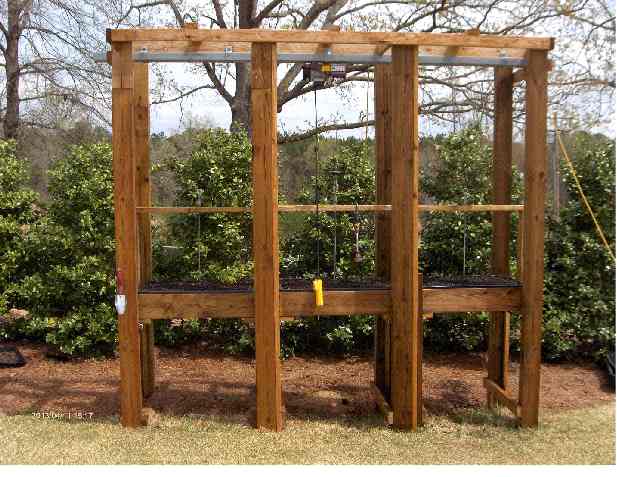In the last article, I described the genesis of the Variable Level Container Garden that at one time was just an idea. That idea was a seed that germinated and grew to be another gardening method surpassing the previous 3 methods based upon stress, (1) traditional gardening, (2) raised gardening and (3) container gardening. This method of growing food almost eliminates the passage, “In the sweat of thy face shalt thou eat bread”, Gen. 3:19.
There are 10 major advantages when growing vegetables in the Variable Level Container Garden.
NO CONTAINER SUN SCALD. The growing container is insulated from sun scald which is associated with growing plants in black plastic containers during the summer. The 2 by 3 foot plastic container is encased with 2 by 8 inch treated lumber. By the way, theses containers are not sitting on hot surfaces such as concrete, asphalt or black plastic ground cover. They are suspended in mid air.
LESS WEEDS. There is less weed infestation in the growing soil/mix when plants are grown elevated above the ground. Weed seeds are scattered by surface wind and water. Most gardening books recommend that gardeners control the weeds around the garden by spraying herbicides, close mowing or hoeing. Weeds are a source of weed seeds and act as a habitat for plant eating insects.
LESS LEAF DISEASE. (A THEOREM) Leaf wetness occurs during the early morning hours, and generally dissipates around 9:00 or 10:00 a.m. A theorem of mine is that elevated leaves should dry more quickly due to upper morning air currents. If this theorem is correct, there should be less fungus diseases on elevated plants.
EARLY DETECTION OF DISEASES AND INSECTS. Early signs of disease infection and insect infestation can be tacitly observed like reading a book. Last year I spotted 2 tomato worms and smashed them promptly before any appreciable damage was done on my tomato plants. Minute fungal leaf spot signs can be spotted early and appropriate action taken. This is called “nipping it in the bud”. To date, there have been NO fire ants observed in the variable level container gardening method.
IMPROVED WATER MANAGEMENT. Water management in the garden can be a problem, too wet or too dry. Brady and Weil in their book The Nature and Properties of Soils, Thirteenth Edition states that plants grow better when the soil is at field moisture capacity. Field moisture capacity is when “The percentage of water remaining in a soil two or three days after its having been saturated and after free drainage has practically ceased.” (page 919) I hand water my container garden with a garden hose until water begins to drain from the weep holes of the suspended container. Do not wet the foliage. This will reduce the chance of creating a perfect environment for plant pathogens.
NO CROP ROTATION. Crop rotation is a very important horticultural practice. If you want to have a tomato failure this year, plant tomatoes in the same spot you had tomatoes last year. You either rotate (change) the vegetable crop or rotate (change) the soil. I have had excellent results when (1) the previously used plant container has been disinfected with a mixture of Clorox and rubbing alcohol and (2) and last year’s potting soil is replaced with new potting soil.
RECYCLE OLD POTTING SOIL FOR THE LANDSCAPE. Recycle used potting soil. Used potting soil is a good source of organic matter for the landscape. I use old potting soil to “juice up” my flower beds each spring. Applying organic matter is a win/win situation. It ameliorates sandy flower beds and clayey flower beds.
ANIMAL PEST DETERRENT. The variable level container garden is possibly the best deterrent against animal pests such as rabbit and deer. Both of these animals, especially deer do considerable damage to our gardens each year. Since deer are browsers, the variable level container can be hoisted higher than the deer’s reach. Bird netting can be wrapped around the variable level container garden structure to prevent bird damage.
NO SOIL GRADING. A variable level container garden may be placed on level or sloping topography, therefore no grading is necessary.
HIGHER VEGETABLE PRODUCTION ON A GIVEN AREA OF LAND. More garden can be grown on less square feet by positioning growing containers above each other. This is called multi-tier growing. Grow root and leafy vegetables which can tolerate moderate shade on lower levels and grow vegetables for their fruit which require more light on top levels.
Happy Gardening Everyone, Prof. Ron
More information on the New Variable level Container Garden, please contact Ron Cowart, cowartconsulting@gmail.com or (803) 513-4242.





